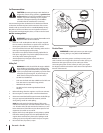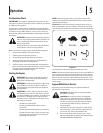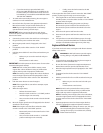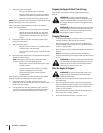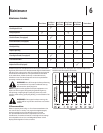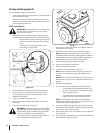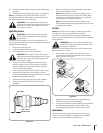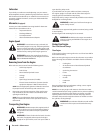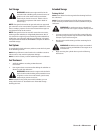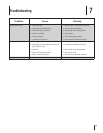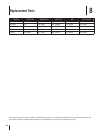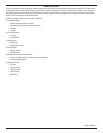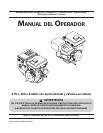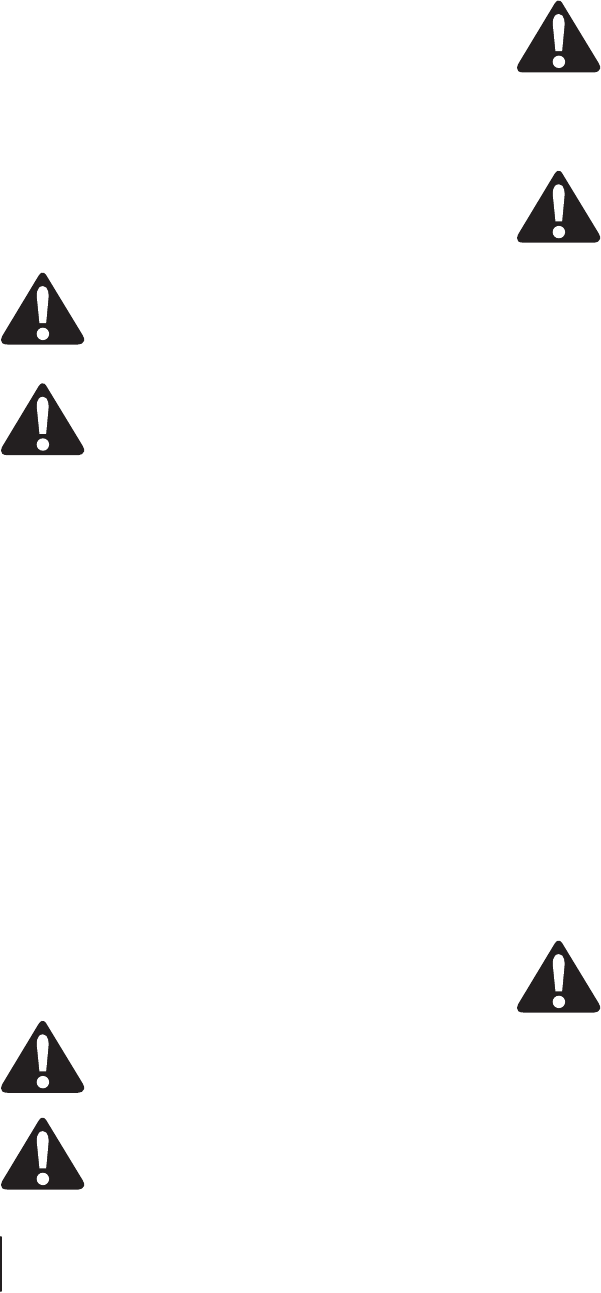
Carburetor
If you think you carburetor needs adjusting, see your nearest
Authorized MTD Servicing Dealer. Engine performance should
NOT be affected at altitudes up to 7,000 feet (2,134 meters). For
operation at higher elevations, contact your Authorized MTD
Servicing Dealer
Alternator (if equipped)
Contact your Authorized MTD Servicing Dealer for alternator
related electrical problems such as:
Inoperative Starter
Fuse Replacement
Alternator Maintenance/Repairs
Engine Speed
To avoid serious injury or death, DO
NOT modify engine in any way. Tampering with the
governor setting can lead to a runaway engine and
cause it to operate at unsafe speeds. NEVER tamper
with the factory setting of the engine governor.
Running the engine faster than the
speed set at the factory can be dangerous and will
Removing Snow from the Engine
After each use, remove snow from the following areas:
Oil Fill Cap Dipstick
Fuel Fill Cap
Recoil Starter/Flywheel Screen
Linkage
Guards
Spark Plug Connection (if visible).
equipment Operator’s Manual instructions).
NOTE: See the equipment Operator’s Manual instructions
for proper location of fuel fill cap and control lever.
Removing snow will ease operation of the recoil starter 4.
rope and reduce the risk of water contamination when
opening the fuel fill cap.
NOTE: For more information about recoil starters, see
Engine’s with Recoil Starters in the Operation Section of
this manual.
Transporting Your Engine
NEVER transport this engine inside of
another vehicle or in any enclosed space if there is
any gasoline in the tank. Fuel vapor or spilled fuel
may ignite.
fuel valve, if equipped, and transport the engine
upright in an open vehicle, such as an open trailer or
open bed of a pickup truck.
If you DO NOT have an open vehicle and have to transport
the engine upright in a closed vehicle, follow these steps for
emptying the fuel tank before transporting:
Empty fuel tank by using a commercially available suction device
designed for use with gasoline.
DO NOT pour fuel from the engine or
siphon fuel by mouth.
Drain fuel into an approved red gasoline container, being careful
to avoid spilling.
Run the engine until remaining fuel is consumed.
NEVER leave the engine unattended
when it is running and NEVER run the engine in an
enclosed area.
Storing Your Engine
Short-Term/Seasonal Storage
Clean Engine
If the engine has been running, allow it to cool for at least half an
hour before cleaning.
blower housing. Discard the dirt and debris from the following
areas:
Cooling Fins
Air Intake Screen or Recoil Starter/Flywheel
Guard Areas
Spark Plug Connection
Levers
Linkage Area
Guards
Carburetor
Removing debris will insure adequate cooling, correct engine
speed and reduce the risk of fire.
NOTE: Do not spray engine with water to clean because water
could contaminate fuel. Using a garden hose or pressure washing
equipment can also force water into the air cleaner or muffler
opening. Water in the air cleaner will soak the paper element,
and water that passes through the element or muffler can enter
the cylinder, causing damage.
Accumulation of debris around muffler
could cause a fire. Inspect and clean before every
use.
16 se c t i O n 6— Ma i n t e n a n c e



